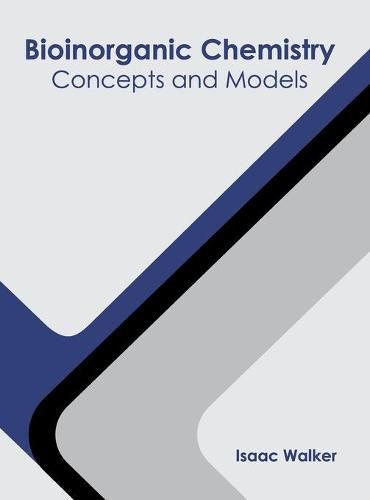Readings Newsletter
Become a Readings Member to make your shopping experience even easier.
Sign in or sign up for free!
You’re not far away from qualifying for FREE standard shipping within Australia
You’ve qualified for FREE standard shipping within Australia
The cart is loading…






Bioinorganic chemistry is the field concerned with the examination of the role of metals in biology. It is an integrated study of inorganic chemistry and biochemistry that uses inorganic models for representing the behavior of metalloproteins. It facilitates the understanding of electron-transfer proteins, atom and group transfer chemistry, substrate bindings and activation, and metal properties in biological chemistry. Inorganic elements, most importantly sodium, calcium, potassium, magnesium, phosphate, bicarbonate, etc. act as ionic electrolytes. Transition metals are present as trace elements in organisms. These metals are used as cofactors in proteins that enable the activity of enzymes. This book elucidates the concepts and innovative models around prospective developments with respect to bioinorganic chemistry. It explores all the important aspects of this field in the present day scenario. A number of latest researches have been included to keep the readers up-to-date with the global concepts in this area of study.
$9.00 standard shipping within Australia
FREE standard shipping within Australia for orders over $100.00
Express & International shipping calculated at checkout
Bioinorganic chemistry is the field concerned with the examination of the role of metals in biology. It is an integrated study of inorganic chemistry and biochemistry that uses inorganic models for representing the behavior of metalloproteins. It facilitates the understanding of electron-transfer proteins, atom and group transfer chemistry, substrate bindings and activation, and metal properties in biological chemistry. Inorganic elements, most importantly sodium, calcium, potassium, magnesium, phosphate, bicarbonate, etc. act as ionic electrolytes. Transition metals are present as trace elements in organisms. These metals are used as cofactors in proteins that enable the activity of enzymes. This book elucidates the concepts and innovative models around prospective developments with respect to bioinorganic chemistry. It explores all the important aspects of this field in the present day scenario. A number of latest researches have been included to keep the readers up-to-date with the global concepts in this area of study.